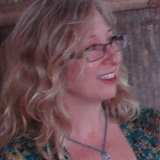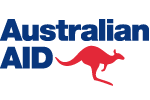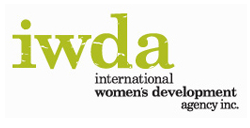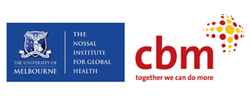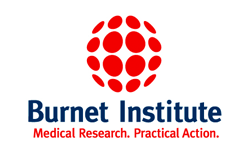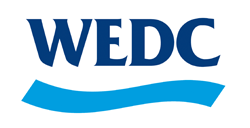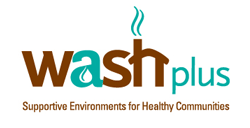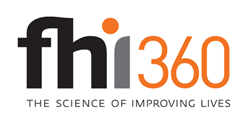Gender: Women and Girls
This session examines the WASH needs of women and girls and their relation to achieving the MDGs as well as social justice. The facilitators address some of the obstacles practitioners encounter in the field including real or perceived indifference and resistance to change. Participants are introduced to fundamental principles and practical tools in a fun and interactive way. A video summary of this webinar will be available to download soon. In the meantime, join the discussion forum by following the links above. This webinar and discussion forum are structured around four main questions.
A summary of the webinar is available below – including information on who participated and where they tuned in from
Fisher, J. (2006). WSSCC: Geneva. The vital role of women in water, sanitation and hygiene (WASH) interventions is undeniable. But even though women’s involvement in the planning, design, management and implementation of such projects and programmes has proved to be fruitful and cost-effective, the substantial benefits of this approach are not properly recognised. One result is that, all too often, women are not as centrally engaged in water and sanitation efforts as they should be.
Mahon, T. & Fernandes, M. (2010). WaterAid. Focussing on effective menstrual hygiene management, as a key aspect of WASH, this resource looks at examining related cultural and religious taboos, as well as male dominance in the development sphere, to overcome barriers to effective menstrual hygiene management. It provides examples of successful initiatives and programs that tackle menstrual hygiene in WASH in the South Asia region.
Introducing the gender and water alliance. A brief summary of arguments for gender inclusive WASH.
Brief introduction to the significance of WASH to women and girls.
A brief introduction to basic gender concepts and why gender matters in WASH.
Some excellent case studies can be found in the GWA UNDP Resource Guide: Mainstreaming Gender in Water Management, which you will find under Topic 4 below. This includes case studies from Africa, Bangladesh, Brazil, Cameroon, Egypt, Ghana, Guatemala, India, Indonesia, Jordan, Kenya, Nicaragua, Nigeria, Pakistan, Senegal, South Africa, South Asia, Tanzania, Togo, Uganda, USA, Uruguay and Zimbabwe and one global case study, all on gender in Integrated Water Resource Management.
Video resource
In this video Barbara Frost, Chief Executive of WaterAid, visits Equator Primary School in Uganda and is inspired by the school’s administration for integrating menstrual hygiene management (MHM) into the school. This video was recorded by James Kiyimba on 1 November, 2011.
UPDATE: For discussion of menstrual hygiene management, please visit the gender discussion forum and read some of the comments from our participants. More resources are available in the resource library.
The below video was made by the AusAID programme on sector capacity development in East Timor. In East Timor there has been a lot of activity on increasing women’s participation in community water management groups in the last year, because before very few were involved in technical roles. For example, If you look at WaterAid the average GMF (user groups) is 35% women, but there were very few women in technical roles.This documentary emphasis the importance of having women in technical roles.
In the webinar and on the forum, it has been noted that people often feel unsure how to raise issues of gender inequality because they tend to be seen as ‘tampering with the culture’. It can feel uncomfortable for outsiders to raise these issues, and for people living inside a culture, challenging that culture can be personally risky. Yet if we continue to ignore these issues, there is a serious risk that we may be making women worse off. Women all over the world challenge gender injustice within their cultures every day. Here are some documents from an IWDA project called Navigating Culture and Gender: Learning from Local Gender Advocates.
This presentation gives some background on a small research study, Closing the Gap (conducted by IWDA’s Joanne Crawford and Patrick Kilby from ANU and recently published by ACFID), which identified this issue as a key problem that development workers face in addressing gender issues in their work; and an overview from the literature of some of the issues of culture and gender that the project aims to address; some questions you might like to consider about your own engagement with gender and culture issues, and a summary of how our project will proceed over the next few months. A more comprehensive literature review is being conducted and will be available soon.
Some quotes and definitions to get you thinking about gender and culture, and the beginnings of a list of interesting resources on the topic of gender and culture in development.
And here are some great resources from other organisations on navigating gender and culture:
Recognising that culture is central to development and that it must be integrated into development policy and programming, this report shows how this process works in practice. The focus is on discussing and showcasing how culturally sensitive approaches are critical for the realization of human rights in general and women’s rights in particular. While much of the publication focuses on reproductive rights, Chapter 4 Negotiating Culture: Promoting Gender Equality and Empowering Women provides an excellent overview of principles, including ‘Seven Lessons from Experience’ that can be applied to any kind of programming. Chapter 7 gives some conclusions that are also useful to anyone wanting guidance on addressing sensitive issues in ‘culture’.
This paper provides a deeper understanding of how culture in the Pacific impacts gender equality and human development. The analysis addresses two views that are widely held in the Pacific: 1) that gender is biologically determined, and 2) that culture is a sacred template should not be meddled with. Both these notions have attracted sound scholarly consideration in the Pacific, which has shown that rather than either being fixed, gender is socially constructed and culture is constituted by contemporary milieu as much as it is by its traditional and historical genealogy.
This note from CIDA provides a useful overview of issues of gender and culture in development work. The tables on p.13-15, ‘Talking about gender equality with partners’ are particularly helpful, and include some practical ways to recognise when ‘culture’ is being used as a form of resistance to change, and how to address these forms of resistance.
A Water and Sanitation Program (WSP) Working Paper published in 2010. For use by ministries, donors, citizens, development banks, NGOs and service providers. The paper looks at links between gender and WASH at the policy level, operational level, monitoring and evaluation, citizen engagement, behaviour change and HIV/AIDS. It showcases examples of good practice and provides checklists for practitioners.
This very useful guide was developed by Gender and Water Alliance and UNDP to meet an identified need in relation to Integrated Water Resource Management. Much of the information can be used more broadly in WASH programming. Two very practical chapters are: Chapter 4: Gender Mainstreaming the Project Cycle; and Chapter 5: Gender Mainstreaming in Water Sector Policies and Institutions.
During program and project design, gender analysis is the process of assessing the impact that a development activity may have on females and males, and on gender relations (the economic and social relationships between males and females which are constructed and reinforced by social institutions). It can be used to ensure that men and women are not disadvantaged by development activities, to enhance the sustainability and effectiveness of activities, or to identify priority areas for action to promote equality between women and men. This article by leading Australian gender and development consultant Juliet Hunt outlines the essential steps for gender analysis at different points in the development process – implementation, monitoring and evaluation; building capacity in donor and partner organisations; issues and strategies at country, sectoral or thematic programming level – and draws on concepts from different frameworks.
This is another very useful document that Juliet Hunt has developed. This provides a brief but thorough guide to the range of considerations that need to be considered in assessing and developing an organisation’s capacity to promotes gender equality internally in the way it conducts itself as well as externally in the work it does.
Supplement to AusAID’s Guide to Gender and Development specifically for Water Supply and Sanitation programs, this resource includes guiding principles, design requirements, guidance on gender analysis and useful references and resources.
Authors: Naomi Carrard and Juliet Willetts (Institute for Sustainable Futures, UTS and Gabrielle Halcrow (International Women’s Development Agency). A tool kit of materials (resource guide, flash cards and a poster) to assist program and field staff involved in the design, implementation and/or evaluation of community-based WASH programs to work effectively with both women and men. The material is based on learnings from research on gender outcomes from rural water, sanitation and hygiene projects in Vanuatu and Fiji. More tools and resources are available at http://genderinpacificwash.info/guidance-material.
Dayal, R., Wijk, C. & Mukherjee, N. (2000). A guide prepared by the Water and Sanitation Program (WSP) and IRC International Water and Sanitation Centre that offers practical tools for bringing gender and poverty-sensitive participation into WASH programs. The MetGuide is useful for communities, project staff, project managers, program designers, donors, researchers and policy makers.
Session Facilitators
-
Di KilsbyInternational Women’s Development Agency
Di Kilsby is the Gender and Training Advisor at International Women’s Development Agency and head of IWDA Gender Wise, a social enterprise consultancy service. Di has twenty years’ experience as a development practitioner, advocate and educator with a focus on gender equality and women’s rights. Di has development experience in many countries in Africa, Asia and the Pacific and in a wide range of sectors. Her gender and WASH experience includes work in Vietnam, Timor-Leste and Tanzania.This work has included development of gender strategies, action research, gender-responsive monitoring and evaluation, and working with staff to develop conceptual understanding and practical skills for WASH programs to achieve positive outcomes for gender justice.
-
Juliet WillettsInstitute for Sustainable Futures
Juliet Willetts is a Research Director at the Institute for Sustainable Futures (ISF), University of Technology Sydney. She leads research and consultancy in international development. Juliet’s areas of expertise are development effectiveness, particularly with respect to gender equality, water, sanitation and hygiene (WASH), the role of civil society in development and innovative approaches to monitoring, evaluation and learning. Juliet recently led two AusAID ADRA research grants, one of which was focused on gender equality, has provided gender capacity building support to AusAID, NGOs and other development agencies.
-
Naomi CarrardInstitute for Sustainable Futures
Naomi is a researcher at the Institute for Sustainable Futures (ISF) within the University of Technology in Sydney. She has been based at ISF for the past 5 years undertaking applied research on various aspects of water, sanitation and hygiene, including the links between WASH and gender equality. She was recently involved in research focused on gender aspects of NGO WASH programs in Fiji and Vanuatu and the development of guidance material based on findings of the research.
This session is proudly brought to you by:
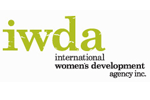
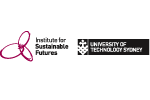
Upcoming Events and News
-
Wednesday, September 19, 2018
Erick Baetings, senior sanitation specialist at IRC, discusses the eye-opening experience watching a group of Cambodian actors use their talent to portray the difficulties people with disability face when accessing…
